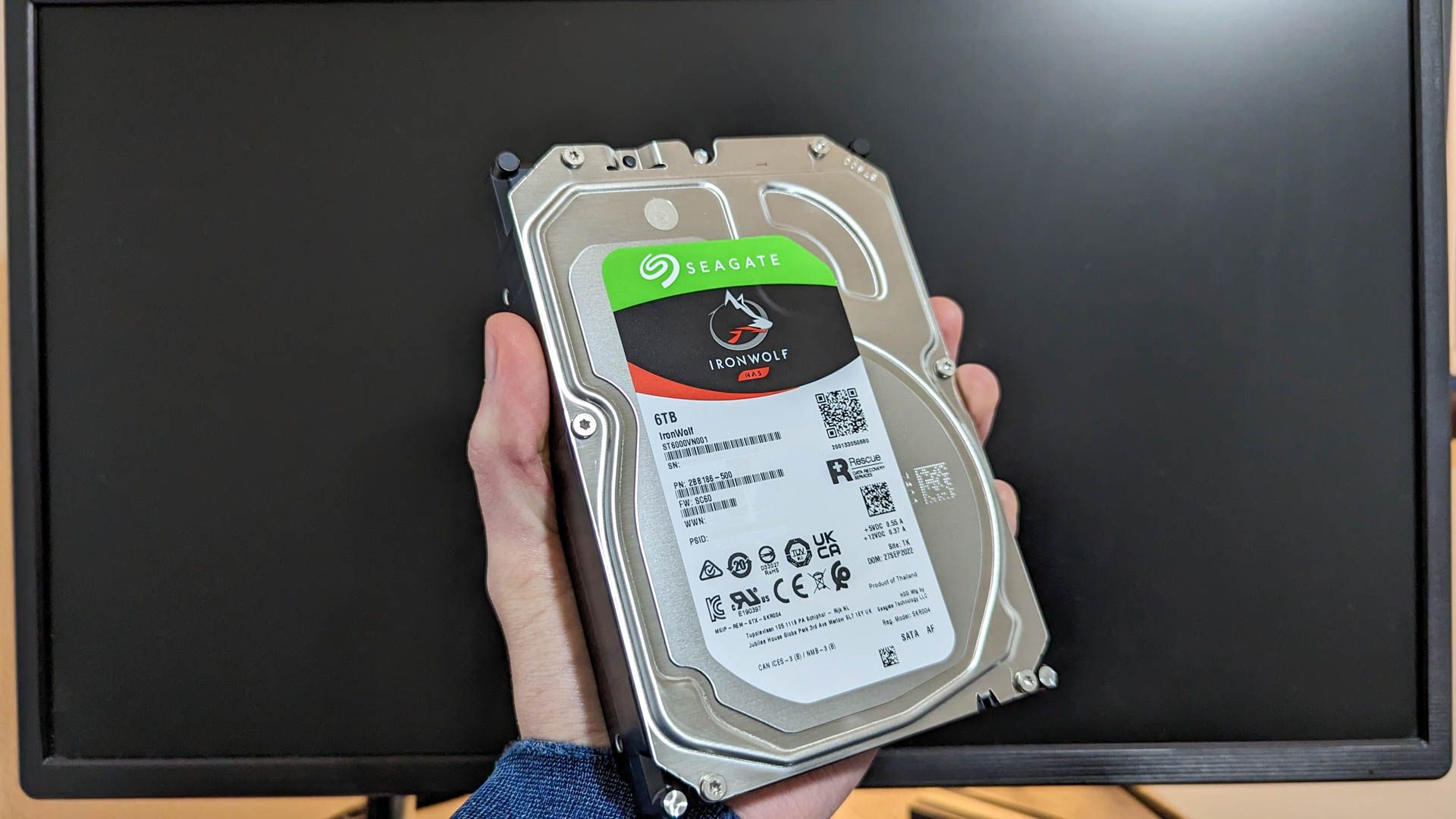Summary
- Instead of buying a new NAS, you could convert an old desktop into a budget-friendly NAS using spare parts.
- Use PCIe HBA cards to add more SATA ports for cheap storage expansion.
- TrueNAS Scale and OpenMediaVault are free alternatives to paid NAS operating systems like Unraid.
Sometimes, you need to upgrade your NAS on a budget. I know I’ve been there. Here’s how I avoided expensive NAS upgrades and the routes I took while staying on a budget.
An Old Desktop Makes for a Great NAS
When I first wanted to upgrade from a 4-bay Synology, I started looking around to see what was out there. Most setups were well outside my budget, but I happened to have an old desktop I wasn’t using anymore that I was able to convert into a NAS.
I picked up a rack-mounted PC case, which I don’t recommend doing. Just stick with whatever case you already have. But, in the end, the desktop-turned-NAS still worked great when I used it.
It wasn’t the prettiest thing in the world, but it got the job done. Years ago, I built an X99 desktop that had way more SATA ports than I knew what to do with at the time. The motherboard had 10 SATA ports on it, which allowed me to hook up all of my hard drives with ease.
I simply loaded Unraid onto the desktop, and I was ready to go with a full-blown NAS, thanks to all the spare parts I already had lying around.
Related
Here’s Why I Built My Own NAS With Unraid and an eBay Server Instead of Buying a Synology
What homelab is complete without some retired enterprise gear?
You might not already have a spare desktop, but people are selling computers cheaply on Facebook Marketplace all the time. Or, you could even opt for an older, enterprise-grade server like I eventually went with. A NAS doesn’t need to have the latest technology in it. Just get something that has at least four cores and 8GB of RAM, and you’ll be just fine as an entry-level NAS.
PCIe Cards Add Lots of SATA Ports for Cheap
What do you do if the desktop that you have (or that you bought) only has two or four SATA ports, and you want more? Well, that’s where PCIe HBA (host bus adapter) cards come in.
These cards slot into a PCIe lane on your desktop and have Mini SAS connectors on them. There are breakout cables, depending on which HBA you get, that can connect to either a SAS backplane if you have one or just straight-up SATA to plug directly into a hard drive.
This is one of the best life hacks when it comes to expanding your NAS system’s storage. On eBay, you can get the LSI 9200-8I HBA with two breakout cables, delivering eight SATA ports, for just $35 shipped at the time of writing. You could, in theory, put as many of these as you could fit in your desktop to continue expanding your storage pools.
If you want a single PCIe device to hook up 16 drives, that’s also available with the LSI 9300-16I HBA, though it does cost $95 instead of the $70 that two of the 9200-8I’s would run. However, if you have a lot of drives, then the LSI 9201-16e external HBA is the best option. It’ll hook into a disk shelf, providing 16 lanes of storage throughput and taking up just one PCIE slot.
No matter which way you go, using a PCIe card to add lots of SATA ports to your system is the way to go when it comes to expanding the amount of storage that you have access to. It’s cheap, easy to do, and works with both TrueNAS and Unraid easily.
Regardless of what computer you opt to use for your NAS, the operating system is something you should definitely consider.
While my personal favorite home NAS OS is Unraid, there’s a cost to it. A lifetime license runs $249, and one year of updates with unlimited attached drives is $119 (if you don’t opt for the lifetime license).
Instead of running a paid OS, you could instead opt for TrueNAS Scale or OpenMediaVault. Both have the same price of free, and are great choices for your home NAS.
While I prefer how Unraid functions to TrueNAS, it’s hard to argue with the price difference. TrueNAS is actually the operating system I started out on for both of my NAS systems because it’s easier to simply download an OS than it is to pay for one.
Related
Why I Chose Unraid Over TrueNAS Scale in 2025
Unraid is just better.
Of course, you could use standard Ubuntu, Windows, or any other OS to run your NAS just the same. TrueNAS and OpenMediaVault are just operating systems that are built specifically for NAS systems.
Source link
